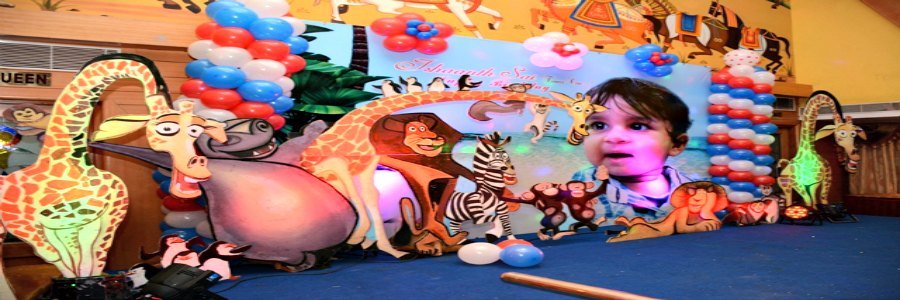- Home
-
Adventure
- Karnataka
- Goa
- Rajasthan
- Madhya Pradesh
- Jammu and Kashmir
- Sikkim
- Other States
- Himachal Pradesh
- Uttarakhand
- Tours
- Events
- Parks
- News
- About
- Others
- Contact Us
Marriages in India are not just coming together of two individuals and exchange of vows and rings, but it marks the bonding of two souls, two families, their culture and their communities. According to the Hindu philosophy marriage is not just a process of coming together of the individuals but it is a holy bond and a commitment which lasts a lifetime.The traditional Indian wedding ceremony is a very complex one with abundance of rituals. The shades of a marriage ceremony varied greatly due to factors like region and language. The modern couples often make up custom weddings and thus highlight the meaningful and special traditions of their Indian heritage.In a Hindu wedding the main day function involves a compilation of various rituals, which are performed by the bride, bridegroom and their parents and close relatives. The Brahmin or priest in the presence of the family members and relatives provides directions and guidance to those partaking in the rituals.The day that you get married should be a day that you remember for the rest of your life. From the hymns and verses about marriage in the Vedas, we learn that mature individuals were considered ready for marriage after puberty. In subsequent times however, brides were married even in childhood, perhaps due to a series of foreign invasions in North India. In an attempt to provide security their women from the invaders, early marriages became the norm. According to the scriptures of Manu, divorce and remarriage were not permitted. Most references to marriage in the ancient texts suggest that the Aryans were monogamous. However, some references to polygamy and polyandry have been found in the Hindu epic of Mahabharata. In medieval India, the marriage was compulsory for all the girls except for those opted asceticism. Brahmin girls were married between ages eight and ten from sixth or century onwards up to the modern times. Polygamy was permitted to all who could afford, and it was especially popular among Kshatriyas for political reasons. According to the Manasollasa, the king should marry a Kshatria girl of noble birth for a chief queen though he is permitted to have Vaishya or Shudra wives for pleasure. Today, in India both divorce and remarriage are completely legal, whereas polygamy and polyandry are both criminal offences for Hindus, punishable by law. The Islamic personal law of Sheriat allows up to four wives for a man, and it is legal for a Muslim to have multiple wives in India.
Wedding Varieties
The customs during the wedding ceremony in India are varied and reflect the vast diversity of cultures of the land. The cultures have influenced each other with mutual borrowing of practices. A day before the wedding, the bride and her friends and female relatives gather for the ceremony of Mehendi, in which their palms and feet are decorated with henna. The bride is teased with music and dance, by the other women about her future husband and in-laws An wedding altar or mandapa is erected at the marriage venue on the day of the wedding, within which the ceremony is conducted. The poles of the frame are draped with strings of flowers. On the wedding morning, various rituals are performed on both the bride and the groom in their own homes. Their bodies are anointed with turmeric, sandalwood paste and oils, which cleanse the body, soften the skin, and make it aromatic. They are then bathed to the chanting of Vedic mantras. Today this is done symbolically, if at all, with a token application of turmeric, sandal wood, and oil on the face and arms, before the bath. The bride now wears all her finery, helped by her womenfolk. In the north and east, the ritual of putting Sindhoor, or vermilion powder, in the parting of the bride's hair is performed by the groom.. The husband dips his ring in vermilion powder and traces a line from the center of his wife's hairline to the crown of her head. Brahmin grooms who have not undergone the Upanayana ritual are given a symbolic initiation. Some warrior communities like the Kodavas involve sword wielding rituals in the ceremony. The gathering showers the bride and groom with flower petals ,While the Western societies glamorized and commercialized the flowers, it is only the Indians who have blended their lives with flowers.) and the couple come out of the mandapa. They touch the feet of their elders to receive blessings and are greeted by everyone present. The bride now leaves for her new home, bidding a tearful farewell to her own family. She now belongs to another family and no longer to her parents, for she has been ritually given away. They proceed homewards dancing and singing. When the bride arrives at her new home, an arati is performed for her by her mother-in-law and she is ceremonially ushered into the house. She takes care to enter, auspicious right foot first, gently kicking over a strategically placed measure of paddy as an augury of plenty for her new family. In today's India, the couple then leaves for their honeymoon.
Weddings Attire
In different parts of India, brides wear different kinds of clothes, ornaments, and adornments. The bride's clothes are usually typical of the area. A Rajasthani bride would wear a lehenga, a Punjabi bride would wear a salwar-kameez, and a Maharashtrian bride would wear a nine-yard saree. Most brides wear saris nowadays, usually in shades of red, pink or mustard. A bride sports as much traditional jewelry as her family can muster, for today, she is Goddess Lakshmi incarnate, harbinger of prosperity to her new home. Like her clothes, the bride's ornaments also differ according to local tradition. However, necklaces, earrings, bangles, rings, a nose-ring, anklets, and toe-rings are worn by most brides. Ornaments like armlets, tikas, hathaphula, and waistbands, traditionally important, are optional today and not worn in all areas. Traditionally, the bride was adorned with natural beauty aids. For example, a paste of henna was put over her nails, which stained them red. Her eyes were lined with kajal and scented water was sprinkled on her. Today, however, most brides, both in the urban and rural areas, use branded cosmetics and perfumes. In south India, flowers were, and remain, an important adornment, while the north is now beginning to rediscover this pretty custom. Most grooms in the north wear a shervani with a churidar pyjama, a bandha-gala suit, or a western-style suit. Turbans are also very popular, for the groom and the important members of his entourage. In the South, grooms either wear the traditional veshti (dhoti) and jubba (kurta) or a three-piece suit. North Indian grooms set forth to their weddings adorned with a sehera, a veil of flowers tied to the turban, to screen their faces from the evil eye (scarecrow).
Mehendi (Henna) Ceremony

The day before the wedding, the bride will gather with her female relatives and friends, where they will dance and sing and she will have her hands and feet decorated with intricate henna designs. The heavy henna designs represent the Indian cultural love for splendor and elegance. The ritual has become an essential part of the wedding celebrations, and her beauty is thought to be incomplete without it.
Mandap Ceremony

The Mandap Ceremony consists of many parts; different rituals selected by the family priests and carried out by the couple. The wedding ceremony takes place beneath the mandap. Some of the rituals performed are briefly explained below.The four-pillared structure is said to represent the four Vedas as well as the four goals of a fulfilled Hindu life (Dharma, Artha, Kama, Moksha). The symbolism of the mandap goes further with each pillar being understood to represent the four parents of the couple, without whose support, love and blessings, the marriage would not have come to take place. The mandap is decorated with fabrics, flowers, or lights, often in red, gold, white, and silver.Under the mandap, the front and center is decorated for the sacred fire. The fire can be small and confined to a brazier or saucer for safety. The fire plays an essential and important role in some of the rituals.
Var Agaman - Welcoming the Groom

The 'baraatis' (groom's party) are received by the bride's family and at the entrance to the wedding venue. The bride's mother welcomes the groom by performing the 'aarti' (traditional Indian welcome ritual with a lamp or 'diya' placed on a platter or 'thali') to welcome her son-in-law and placing a tilak (red dot) on his forehead.
Kanya Agavan - Welcoming the Bride
Traditionally, the bride is led to the mandap by her maternal uncles. Erica's brother will walk her to the mandap. Before her entrance, a white sheet will be suspended before Sunil, so that he cannot see her entrance. Once she is seated in the mandap across from him, the curtain will be lowered and they will be allowed to see one another for the first time that day.
Varmala/Jaimala - The Exchange of Flower Garlands

The varmala ceremony is when the bride and bridegroom exchange flower garlands. The bride comes to the mandap with the garland to greet the bridegroom, who is then handed his garland to give to her. By placing the garland around the bridegroom, the bride is accepting the groom as her loving husband.
Mangal Sutra - Putting the Necklace on the Bride

The groom places a necklace, the mangalsutra, around the bride's neck to represent their integrity and love. Indian brides did not used to wear wedding rings, and this necklace signified her married status. The mangalsutra consists of a gold ornament strung from a yellow thread, a string of black beads or a gold chain. It is comparable to a Western wedding ring, and is worn by a married woman until her husband's death.
According to Hindu culture, there are five signs of marital status of women. They are mangalsutra, toe rings, kumkum (red powder applied to the part of their hair), bangles and a nose ring. Mangalsutra is the most important among them.
At this point in the ceremony, Sunil and Erica will also exchange rings.
Mangal Fera - Circling the Holy Fire

The couple walk around the sacred fire Four times, each time stopping to touch with their toe a stone in their path. This symbolises that they will overcome any obstacles in their life together. These four rounds represent the four goals in life:
1. Dharma (rightousness)
2. Aarth (wealth)
3. Kama (love, family, energy and passion)
4. Moksha (salvation, spiritual liberation)
The groom leads the first three rounds and bride leads the last one. Each walk around the fire is accompanied with prayers and blessings recited by the Pandit.
Saptapadi - The Seven Steps

The bridegroom gets up from his seat holding his bride's right hand. He then goes around the Holy Fire (Agni) from the right side, by lifting his bride's right foot at each step. This is done for seven steps. With each step, he recites a mantra addressed to the bride with the following meaning:
Let Lord Maha Vishnu follow each one of your steps for the following specific purposes.
The vows taken in each phera are as below:
1. With the first phera, the couple invokes the Gods for the plentitude of pure and nourishing food and a life that is noble and respectful.
2. With the second phera the couple prays for physical and mental strength and to lead a healthy and peaceful life.
3. The third phera is taken for the fulfilment of spiritual obligations. The Gods are invoked for blessing the couple with spiritual strength.
4. The fourth phera is taken for the attainment of happiness and harmony through mutual love and trust and a long joyous life together.
5. The fifth phera is taken to pray for the welfare of all living entities in the entire universe and for begetting noble children.
6. The sixth phera is for bountiful seasons all over the world. The couple prays for bountiful seasons and seeks that they may go through these seasons together, just as they would share their joys and sorrows.
7. With the last phera they pray for a life of understanding, loyalty, unity and companionship not only for themselves but also for the peace of the Universe.
The idea behind this is to pray to Lord Vishnu, the protector of life, for his blessings in marital life. Having exchanged these vows of love, duty, respect, fidelity and a fruitful union the couple agree to be companions forever. The process of saat phere acquires more significance in that the couple prays for the peace and well being of the entire universe.




















